Failure of the brake master cylinder is caused by wear of the pistons, sealing rings, and the working surface of the cylinder
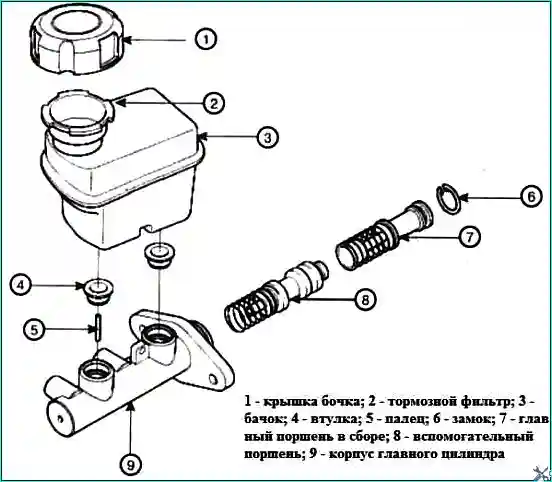
Removing the brake master cylinder
Preparing the car for the task.
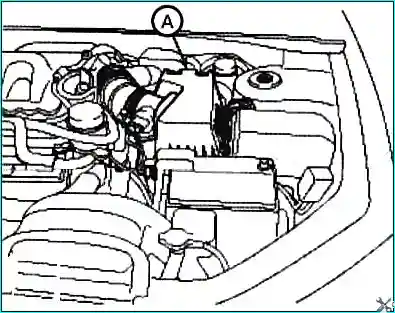
Removing the air filter assembly
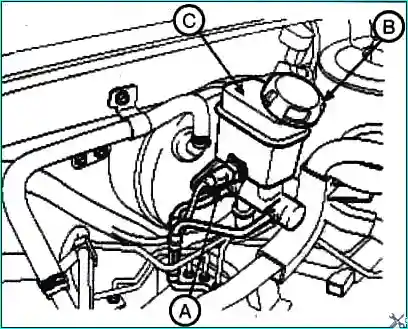
Disconnect the connector (A) of the brake fluid level sensor and remove the tank cap (B)
Using a rubber bulb or syringe, pump out the fluid from the brake master cylinder reservoir
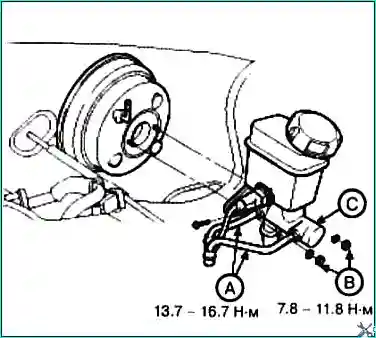
Disconnect the brake pipe (A) from the brake master cylinder.
Close the brake pipe with a plug from dirt ingress
Unscrew the mounting nuts (B) of the brake master cylinder and remove the washer
Remove the brake master cylinder from the power steering
Install the master cylinder in the reverse order and bleed the brake system, article - Bleeding the hydraulic brake system
Disassembling and assembling the brake master cylinder
Drain the remaining fluid from the master cylinder reservoir
Remove the brake fluid level sensor
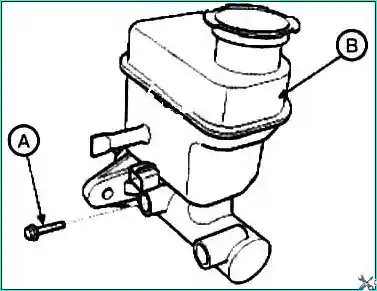
Remove the reservoir from the brake master cylinder and unscrew the screws (A)
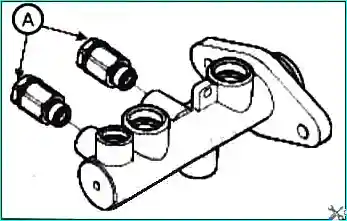
Remove the pressure limiter
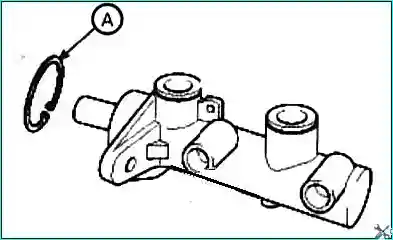
Remove the retaining ring using pliers for removing retaining rings

Remove the master piston assembly (A)
Remove the pin (C) with the auxiliary piston (B), squeezing it out with a screwdriver
After disassembling, check the working surface cylinder for scratches and corrosion
Check the brake master cylinder for wear and damage
If the cylinder is damaged, replace it
Assembling the brake master cylinder
Wash the brake master cylinder parts with clean brake fluid or alcohol
Apply brake fluid to the rubber parts of the cylinder and bushings
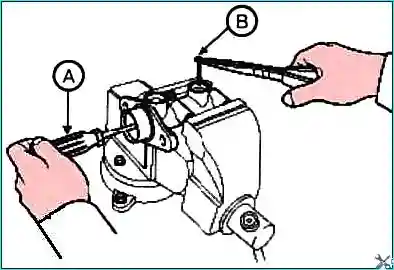
Carefully insert the springs and pistons
Pressing the piston with a screwdriver (A), install the finger (B)

Press the piston with a screwdriver and install the retaining ring
Measure the protrusion of the pusher and adjust (8.25±0.125 mm).
Install the pressure limiter
Install two bushings, and then the tank





